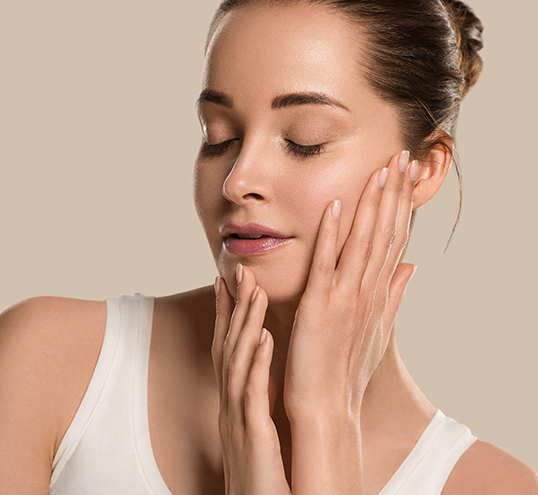5 skin types and their characteristics
¿Has it ever happened to you that you go to buy a product for your skin and you don’t know if you need it for dry or normal skin?
This is more common than you think, so today we want to share with you some basic tips, with which you can identify what type of skin you have.
We know that we all want to have a flawless and luminous skin, but of course, not all people use the same strategy to achieve it. That is why it is important to know what your skin type is so you can take care of it with specific products of high standards such as Sesderma and Guinot.
Using the wrong products for your skin type is ineffective and can even be harmful.
For this reason, the ideal is to consult a professional esthetician, to know for sure what our skin needs.
Skin is divided into five categories: normal, oily, combination, dry and sensitive.
I’m sure yours fits perfectly into one of them. Although skin can change due to climate, health and aging, skin type has a genetic origin and is maintained throughout life.
Normal skin
If your skin has few pimples, small pores and does not usually become irritated or red, you probably have normal skin. This type of skin is usually balanced, not too dry or too oily, and free of blemishes.
In other words, your skin has no shine, no imperfections and a rosy, even tone.
This does not mean that it does not require care, but it must be specific to avoid damage due to external factors such as sun exposure or natural aging.
Oily skin
People with oily skin have a shiny appearance all over the face, due to the high production of sebum. The biggest problem of this skin type is pimples and blackheads.
The causes are genetic predisposition, stress and hormonal fluctuations. Research indicates that 40-55% of adults have oily skin and suffer from late acne.
While it is true that this skin type can be a little more difficult to care for, it also takes longer to show signs of aging.
Combination skin
Combination skin is so called because it is a combination of two skin types: normal-dry and oily or impure.
However, it can also be identified when you have an oily feeling in the T-zone made up of the forehead, nose and chin, but the rest of the face is balanced.
Dry skin
When you stand in front of the mirror, do you see rough or flaky skin, looking dull?
If so, you may have dry skin. This type of skin retains less moisture than normal skin and the sebaceous glands secrete less oil, causing flaking and the appearance of fine lines.
Sometimes it tends to be blotchy and sometimes looks older than it really is, as well as being greatly affected by climate changes.
Sensitive skin
Sensitive skin is often reddened or irritated and sensitive to external factors such as stress, dry air from heating or UV light.
This type of skin also tends to be thinner, has smaller pores and tends to be drier.
Knowing your skin type will allow you to care for and protect it properly.
Using the right products is vital to achieve your goals. But remember the ideal is to add treatments with professionals who moisturize and oxygenate the skin deeply, at least once a month.










